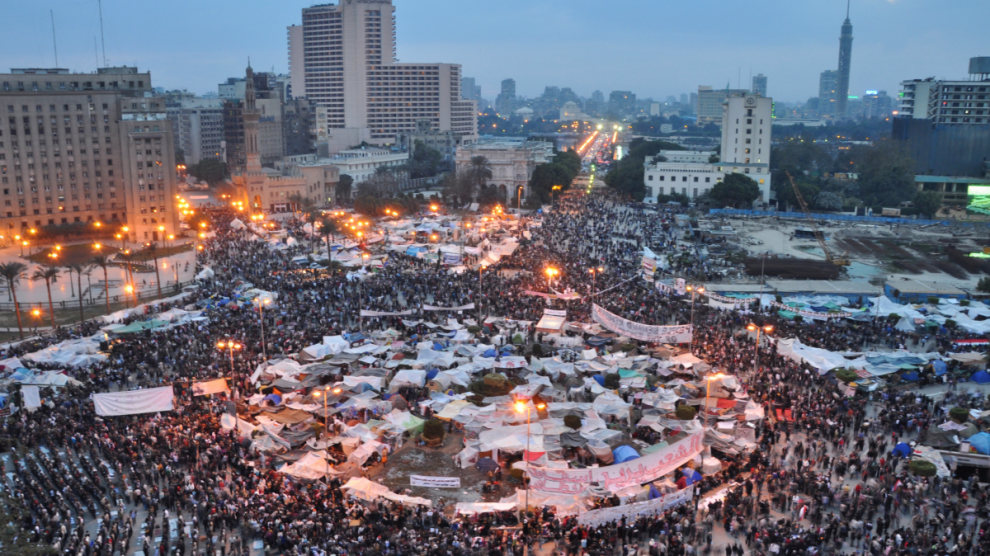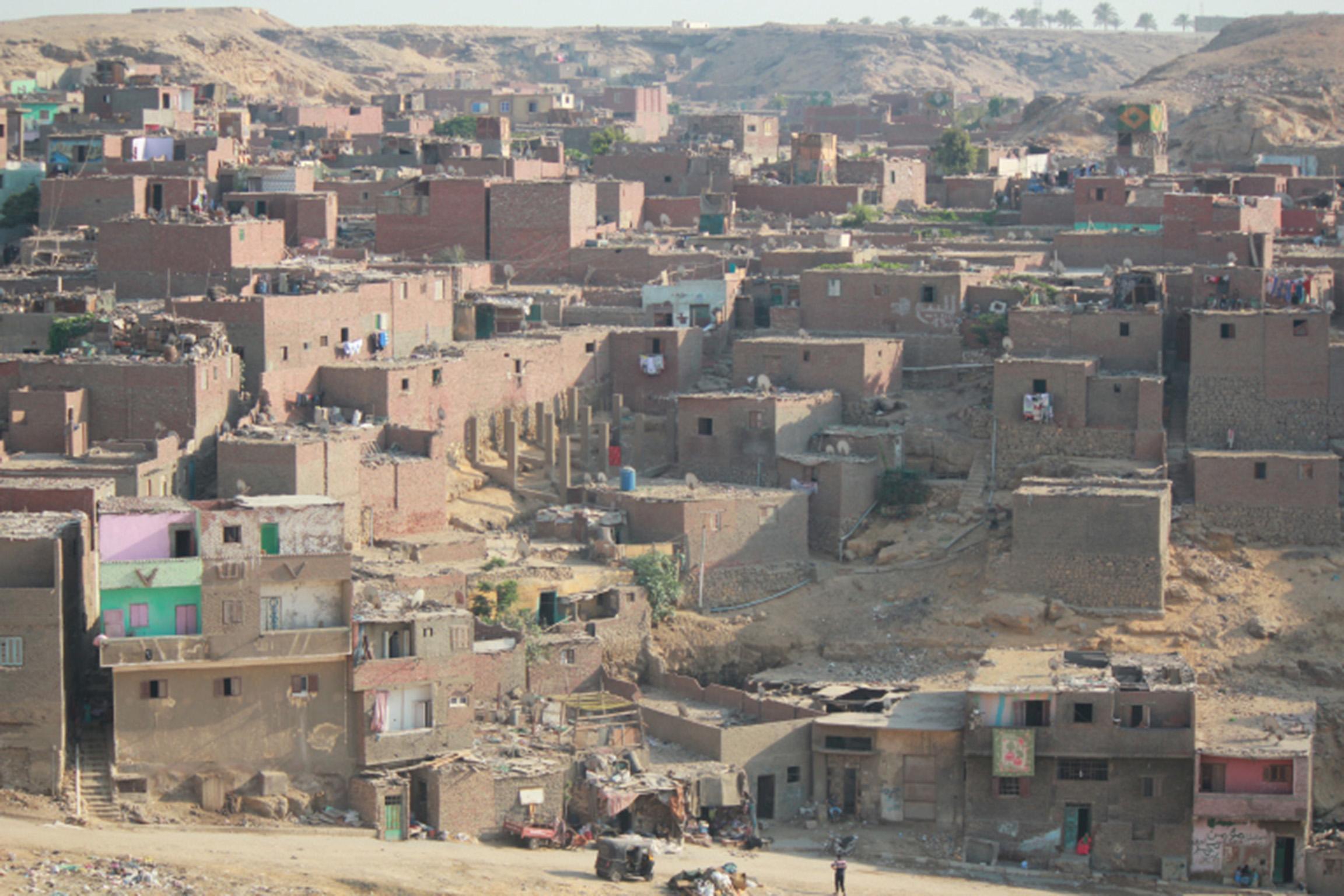Ten years on: Egypt and the legacy of the Arab Spring
A decade ago, the Arab Spring popular protests rippled over Middle Eastern regimes, toppling a number of long-standing leaders once considered impervious to change. This extraordinary and emotional shock persuaded and galvanized people to take hold of power and to evict entrenched autocrats, with the goal of setting the stage for a real change in their histories. But this conviction quickly gave way to a bitter backlash, in which most authoritarian rulers regained power leaving citizens with frozen promises of change. Was there a real Spring? Or was everything erased, fuelling an almost romantic and nostalgic idea that the upheaval was a simple and elusive moment of lost hope?
If Tunisia is the only MENA country to have embarked on a path of political change in the wake of the Arab Spring, Egypt represents the great undoing, in which hope and fear are two different faces of the same coin.

Ten years later, Egypt has not achieved democracy and the uprisings appear a distant and faded memory. The country has changed deeply but lives in a limbo in which limited transformations, symbolic acts of liberalization in the economy and blessings from above are accompanied by protests, requests for more rights and an intensification of crackdowns. In addition to the mass protests that overthrew the Mubarak regime in 2011, and that triggered a process of deep structural change able to initiate a new season of hope and democracy, Islamist forces (in particular the Muslim Brotherhood) also played an important role in the Tahrir Square protests. In fact, the Muslim Brotherhood won a significant election, making Mohamed Morsi the first Islamist president in Egyptian history (July 2012).
Since then, the country has been challenged by several situations of instability, opening a new phase of social unrest and a further repressive and backward evolution of the regime, whose future remains highly uncertain. In fact, after the crackdown on the Muslim Brotherhood in July 2013, and Mohamed Morsi’s fall, old civil and military elites regained full power. To legitimize their ideological and political battles in the country, they relied on an anti-Islamist and violent campaign. The military coup ended any nascent democratic experiment in Egypt, favoring a fragmented and polarized society.
Moreover, the election of former Field Marshal Abdel Fattah al-Sisi as new president in 2014, marked the closing of the revolutionary process and warranted a new course of restoration, in which authoritarianism, modest political, social, and economic gains and worsening repression became the “new normal” for the country. Any revolutionary process was also blocked, in part, by others in the region, like conservative Middle Eastern powers (such as Gulf monarchies), that backed old regimes in their efforts to discredit the uprisings. At the same time, the United States and European countries did nothing to prevent the restoration of the old Middle Eastern power, accepting this attempt to redefine a new path of the status quo ante.
In the country today, the government crushes every possible sign of popular unrest, repositioning the authority of the Egyptian security forces at the center of the institutions and civic and political life, strangling any form of dissent. In little time, Egypt has become one of the world’s top jailers of journalists and human rights defenders (one example is the case of Patrick George Zaki and his colleague from the Egyptian Initiative for Personal Rights), many of them with the instrumental charge of terrorism (estimated by Human Rights Watch at about 60,000 in 2016). In addition, authorities in Cairo have tightened their grip on cyberspace by restricting Internet access, enacting laws that facilitate censorship, and jailing people over their anti-government posts online. In addition, in April 2019, the success of the Constitutional referendum gave Al-Sisi the opportunity to prolong the presidential mandate governing the country until 2030. This is a quantitative and qualitative leap in terms of repression and centralization of powers, in which the restored “stratocracy” has ensured a new durable season of authoritarian governance. Although Al-Sisi has promised Egyptians stability and economic prosperity, even political stability seems to be a distant mirage. In this context, a sense of mistrust and popular dissatisfaction is growing in the Egyptian society – a challenging scenario that risks opening a new phase of unrest. The economy, security issues and democratic processes are the main challenges that make Egypt a more fragile country than it was a decade ago. In fact, this apparent stability ended in the late 2019, when the Egyptians took to the streets calling for the removal of the local strongman, chanting slogans such as “Sisi, leave!” or “Down with Sisi!”. These are rare events in a country led with an iron fist and where public protests and political dissent are substantially silenced through Al-Sisi’s crackdowns.
Despite Al-Sisi appearing as the most powerful man in the country, his power is fragile and closely connected to the trajectory of the Egyptian élites and, in particular, to the military forces. The Egyptian Armed Forces (EAF) are the only political, social and economic source of legitimacy in the country and any changes in Egypt can be technically possible only if there is a coincidence of interests between the president and the EAF.

A renewed leadership of EAF, also guaranteed by the Constitutional reform in 2019, that recognizes the role of sole guarantor of the Constitution and the state. At the same time, the EAF has strengthened its role in setting the domestic agenda, playing a pro-active role in the socio-economic transformations of the state while preserving its entrenched economic interests (based on unofficial estimates, the military enterprises may account for up to 20-60% of total national GDP; 3% of the GDP according to government data). This condition has also aggravated the already weak level of legitimacy between ruled and rulers. Since 2014, Egypt’s political stabilization process has gone through a mix of civil-military repressive measures, which has led to a new autocratic government, in which the state has reaffirmed its control over all sectors of society without resolving the existing structural problems. Egypt’s democratic process has been frozen and any attempt to promote even small reforms suffers the price of a lack of credibility.
Contextually to democratic backsliding, the economy also plays a fundamental role in national instability. Egypt’s economy is traditionally fragile and still depends on a wide range of domestic and external variables. The government in Cairo has strengthened its authoritarian stronghold on state structures through a combination of repression and co-optation in order to control processes and social dissatisfaction/resentment. In fact, the country continues to suffer long-term structural problems (i.e., heavy demographic growth, unfair redistribution, poverty, unemployment and corruption) that fuel the anger of millions of Egyptians. Moreover, the social and economic impact exacerbated by the COVID-19 pandemic has worsened pre-existing vulnerabilities and inequalities, triggering frustration and distrust among Egyptians towards the institutions, ruling elites and political parties.

Due to this, authorities in Cairo signed a US$5.2 billion stand-by arrangement with the International Monetary Fund (IMF), a one-year loan agreement to address the emergency arising from COVID-19. These measures have become necessary after the collapse of the national (and also global) tourism industry (down by 21.6% in 2020), falling revenues from the Suez Canal in 2020 (declined by 3% to US$5.61 billion compared to 2019), and the drop in Egyptian expatriate workers’ remittance from the Arab world (declined by 19.7% to around $445bn, compared to $554bn in 2019). No less important is the reduction in investments by Gulf partners as an indirect impact of the drop in energy prices.
Despite a GDP growth (5.2% in 2020, the only Middle Eastern country with a positive GDP) and growing hard currency reserves, poverty in Egypt is rising (according to official statistics agency, 32.5% percent of Egyptians lived below the poverty line already in 2018) and cuts in subsidies have exacerbated the drop in standards of living. At the same time, the socio-economic impact of the COVID-19 pandemic has contributed to a sharp rise in unemployment (increased to 9.6% in the second quarter of 2020 compared with 7.5% a year earlier, according to Central Agency for Public Mobilization and Statistics – CAPMAS) and the cost of servicing Egypt’s debt (almost the 10% of GDP), fuelling new upheaval and protests.
If neglected, this troubled context could set the scene for a new leadership if the EAF were to consider Al-Sisi unable to control protests. Moreover, this emergency could justify a new regime-led round-up and repression to officially control political tensions and outbursts of violence, which could also be exploited by terrorist groups – although extremism is almost always the result of the government repression.
In conclusion, ten years after the Arab Spring, Egypt seems to return to the past. A badly needed new social contract to usher in a new era of change is not on the horizon.
